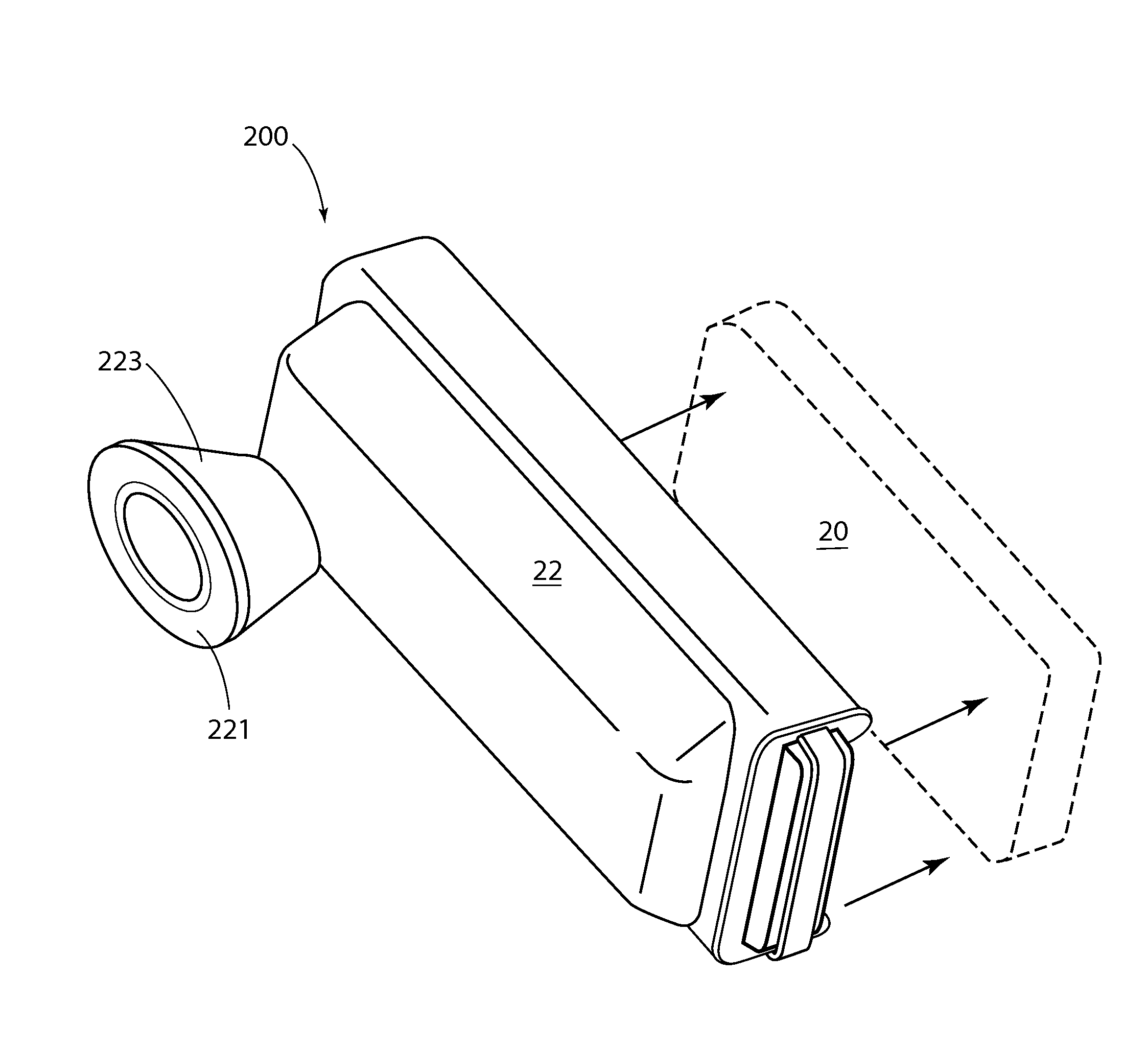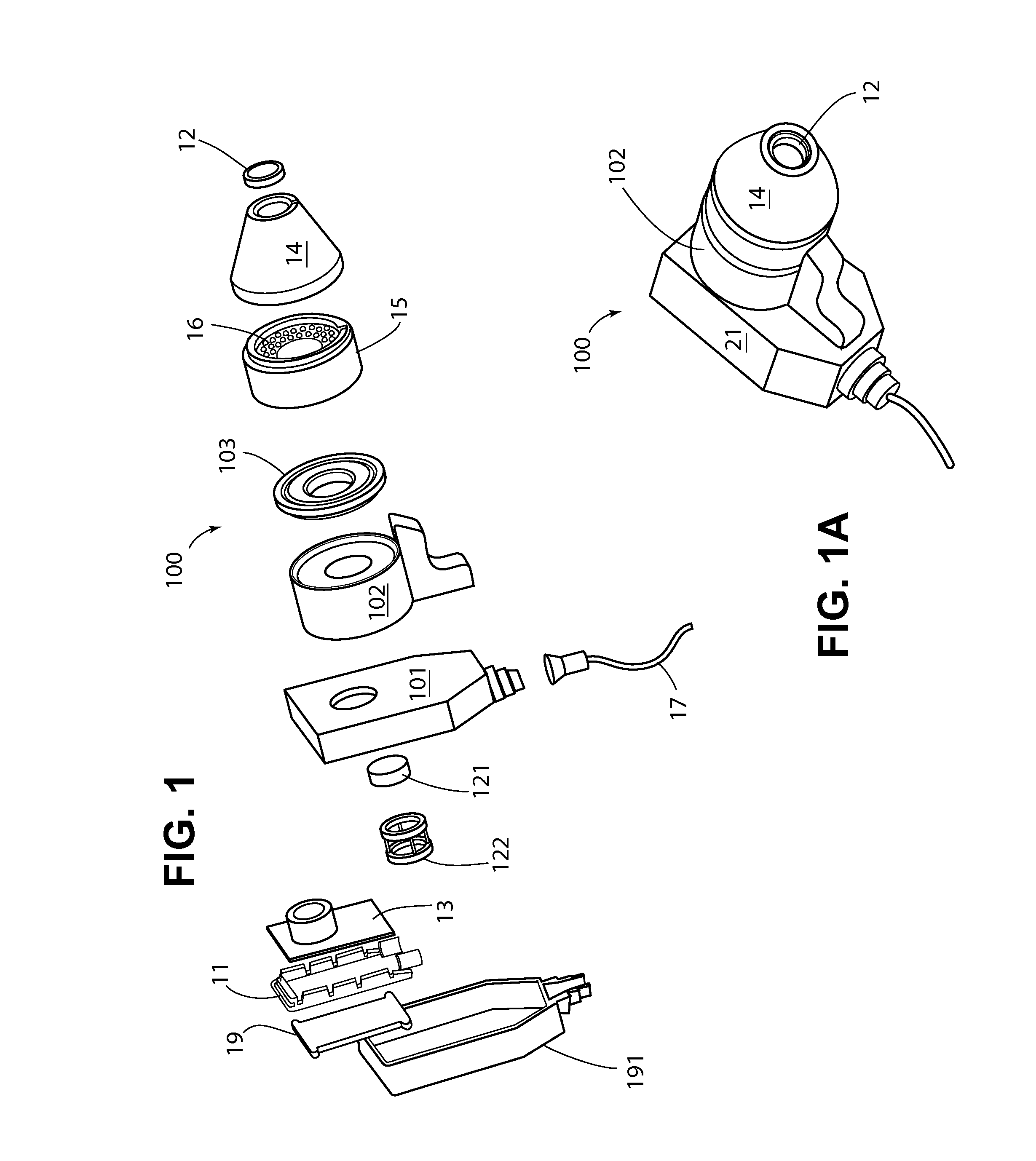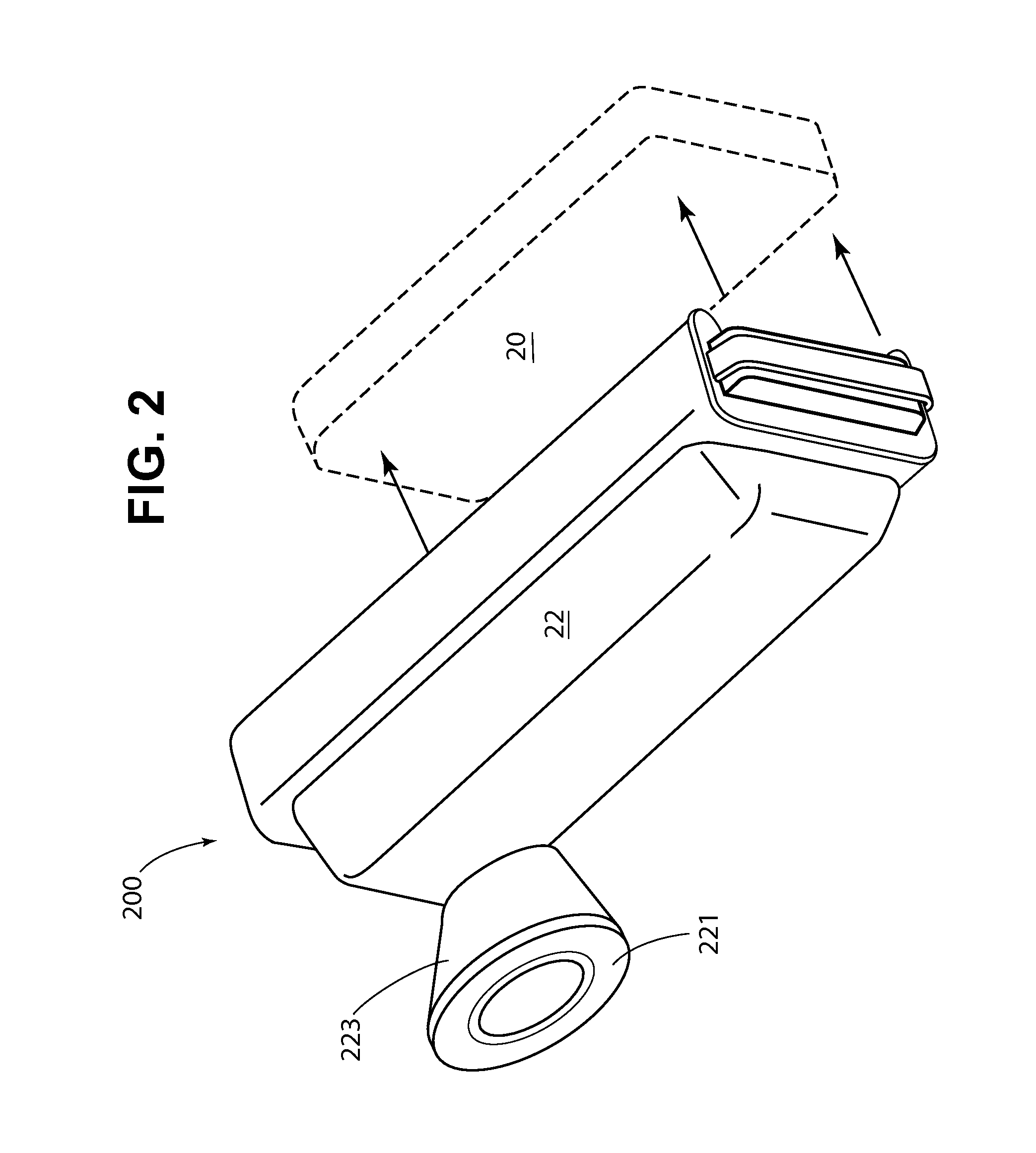System and method for optical detection of skin disease
a skin disease and optical detection technology, applied in the field of systems and methods for optical detection of skin diseases, can solve problems such as non-rotational symmetry of the lesion, and achieve the effect of improving diagnostic accuracy and enhancing the opportunity to visualize the data obtained
- Summary
- Abstract
- Description
- Claims
- Application Information
AI Technical Summary
Benefits of technology
Problems solved by technology
Method used
Image
Examples
Embodiment Construction
System and Apparatus
[0028]A system according to the invention comprises a camera, a mechanical fixture for mounting the camera in a fixed position with respect to the subject's skin, at least one processor adapted to perform the clock sweep algorithm, and at least one output device.
[0029]In the clinical embodiment depicted in FIG. 1, the camera is a circuit board level charge coupled device (CCD) detector imaging array mounted on a fixture that can be pressed against the subject's skin. In this embodiment, the fixture 100 defines a distal plane formed by a flat transparent plate 12 of glass, polycarbonate, polymethylmethacrylate (PMMA) or the like, that may be pressed against the subject's skin so that the lesion stays in one plane when the image is obtained. Plate 12 may be mounted on a spacer, such as nose cone 14, which protects the camera lens aperture and provides an optimal distance between the illuminating and imaging apparatus and the lesion.
[0030]An illumination apparatus, ...
PUM
 Login to View More
Login to View More Abstract
Description
Claims
Application Information
 Login to View More
Login to View More - R&D
- Intellectual Property
- Life Sciences
- Materials
- Tech Scout
- Unparalleled Data Quality
- Higher Quality Content
- 60% Fewer Hallucinations
Browse by: Latest US Patents, China's latest patents, Technical Efficacy Thesaurus, Application Domain, Technology Topic, Popular Technical Reports.
© 2025 PatSnap. All rights reserved.Legal|Privacy policy|Modern Slavery Act Transparency Statement|Sitemap|About US| Contact US: help@patsnap.com



